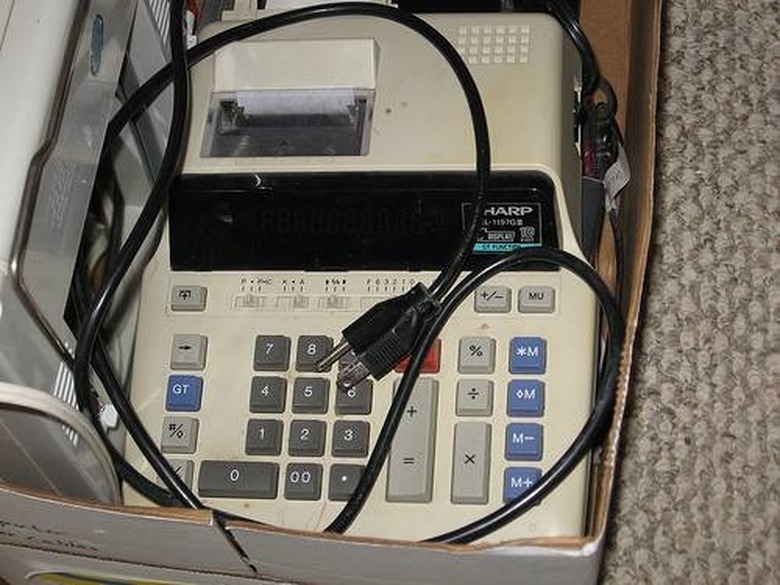How Does An Adding Machine Work?
Basic Information
Basic Information
Adding machines have made a lot of progress since William Burroughs received his patent in 1888. Even still, it is rare to see an adding machine in an office today because of computers and calculators. Adding machines work on a binary system similar to computers and were created mainly for an accounting environment. Accountants and business owners are not concerned as much with addition and subtraction as they are with positive and negative numbers. So, if you have an old adding machine and you use it like you would a calculator, your adding machine may not work correctly for you and you will not receive totals that make sense. Of course, it is always important to read the directions that go with your machine. You can also find online help from the company that made your machine.
Adding and Subtracting
Adding and Subtracting
When you want to complete a problem on an adding machine, such as "7 – 3," you would not key in "7," then the subtraction sign, then "3" and then an equal sign. If you do, then you will get an answer of "-4," and you know that is not the correct answer. Again, you have to think like an accountant when you are working with your adding machine. To figure this subtraction problem on an adding machine, you would need to key in "7," the addition sign, "3" and then the subtraction sign; you would get the answer of 4. You are actually working the problem as "7 + (-3)." This would be true on most modern day machines. In order to subtract, you have to add the negative number.
Other Functions
Other Functions
When multiplying and dividing numbers with modern adding machines, you punch the keys and work the problems similar to the way you would with a calculator. So, if you want to multiply 7 by 6, then you hit the "7" key, the multiplication key, the "6" key and then the "Total" key, according to what you have read in your user manual for your particular machine. The same is true for division–it is like a calculator. A difference would occur when you need to multiply a negative number because you would hit the subtraction sign after you key the number. Adding machines also have memory, where you can add a group of numbers, save them in memory, add another group of numbers and then add the two sums. The memory feature is particularly helpful when you have to solve a problem that would have parentheses. Each adding machine works a little differently depending on the brand or model. Make sure to practice with easy numbers before you have to add several numbers, work on your taxes or balance accounts for your business.
Cite This Article
MLA
Dill, Margo. "How Does An Adding Machine Work?" sciencing.com, https://www.sciencing.com/adding-machine-work-4599934/. 24 April 2017.
APA
Dill, Margo. (2017, April 24). How Does An Adding Machine Work?. sciencing.com. Retrieved from https://www.sciencing.com/adding-machine-work-4599934/
Chicago
Dill, Margo. How Does An Adding Machine Work? last modified March 24, 2022. https://www.sciencing.com/adding-machine-work-4599934/
